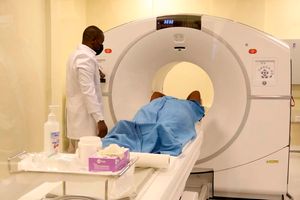New technique may aid early detection of breast cancer: Study

Researchers devised technique for measuring breast density in mice, which resulted in improved detection of changes in tissue.
There is some good news in the study of breast cancer after researchers devised a two-pronged technique for measuring breast density in mice, which resulted in improved detection of changes in breast tissue, including early cancer symptoms.
The researchers anticipate that this approach from mice will be used to better human breast imaging.
Researchers say the technique may also aid in disease prognosis because density can be linked to specific patterns of mammary gland growth, including signals of cancer development.
Breast cancer has the highest incidence among all cancers, with over 2.2 million cases reported globally in 2020. It is the leading type of cancer in Kenya, with 6,799 new cases in 2020 and an age-standardized rate of 41 per 100,000.
Also Read: You can beat cancer; I did it twice
Preliminary data from the Kenya National Cancer Registry 2014-2019 (KNCR) show that 7 out of 10 cancers are diagnosed at advanced stages (stage III and IV).
Invasive ductal carcinoma (IDC) is the most common histological type diagnosed, accounting for up to 75 percent of all breast cancers.
Key challenges in breast cancer control include limited access to cancer preventive, diagnostic, treatment, and rehabilitative services.
“Having a means to accurately assess mammary gland density in mice, just as is done clinically for women using mammograms, is an important research advance. This method has the benefit of being applicable across all ages of mice and mammary gland shapes, unlike some methods used in earlier studies," says Priscilla A. Furth, professor of oncology and medicine at Georgetown Lombardi and corresponding author of the study.
The findings of the research were published in the American Journal of Pathology.
Georgetown alum Brendan Rooney developed an innovative analytic computer program while working as an undergraduate in Furth's lab. This program allowed for sorting mammary gland tissue into one of two imaging assessments.
The research specialist initially looked at younger mouse glands and found that a program that removed background 'noise' in those images helped boost the detection of abnormalities in what are typically rounder, more lobular tissues.
But as aging occurs and the chances of developing cancer increase, lobules diminish, and ridges become more apparent.
When the de-noising technique was applied to the images from the older mice, it was less reliable in detecting ridges. Therefore, Rooney and the team turned to a different imaging program, primarily used to detect blood vessel changes in the eye's retina.
The mammary ridges represent ducts that carry milk and other fluids.
"The idea for the analytic program came from routine visual observations of tissue samples and the challenges inherent in observing differences in breast tissue with just a microscope. We found that visual human observations are important but having another read on abnormalities from optimal imaging programs added validity and rigor to our assessments. Not only does our program result in a high degree of diagnostic accuracy, it is freely available and easy to use," said Rooney, the study's lead author.





